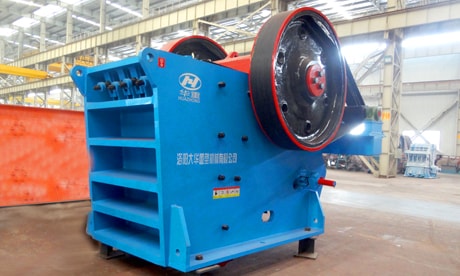The inspection and maintenance tasks for jaw crusher are as follows:

(1) Check the temperature of the bearings, and it should not exceed 60°C (70°C for roller bearings). This is because the bearing pedestal metal used for casting the bearing bush can only function properly below 100°C. If the temperature exceeds 60°C, the crusher should be stopped immediately for inspection to eliminate faults. The method of inspection is to directly read the temperature value if there is a thermometer on the bearing. If there is no thermometer, estimate the temperature by touch. If it is too hot to touch for more than about 5 seconds, the temperature exceeds 60°C.
(2) Check if the lubrication system is functioning properly. Listen to the oil pump's working sound, observe the oil pressure gauge pressure, and check the oil level and any oil leaks from the tank.
(3) Check if the returned oil contains metal fines or other impurities. If so, the crusher should be stopped immediately, and lubrication points such as bearings should be opened for inspection.
(4) Check if bolts, flywheel keys, and other connecting parts are loose, and inspect the wear of liner plates and transmission components.
If the discharge outlet increases due to liner plate wear, adjust the size of the discharge outlet promptly to meet the required particle size of the crushed product. The adjustment of the discharge outlet size should be carried out within the range specified in the crusher's product manual.
The discharge outlet size refers to the distance between the peak of one liner plate to the corresponding trough of another liner plate. For convenient measurement, a template can be made according to the desired discharge outlet size.
(5) Regularly clean the lubricating oil filter, and wait for it to dry completely before use.
(6) Periodically replace the lubricating oil in the tank. Lubricating oil gradually ages and deteriorates during use due to exposure to air, heat, infiltration of impurities such as dust and moisture, among other reasons. Therefore, it is essential to choose a reasonable lubricating oil replacement cycle and avoid using oil beyond its effective period.

